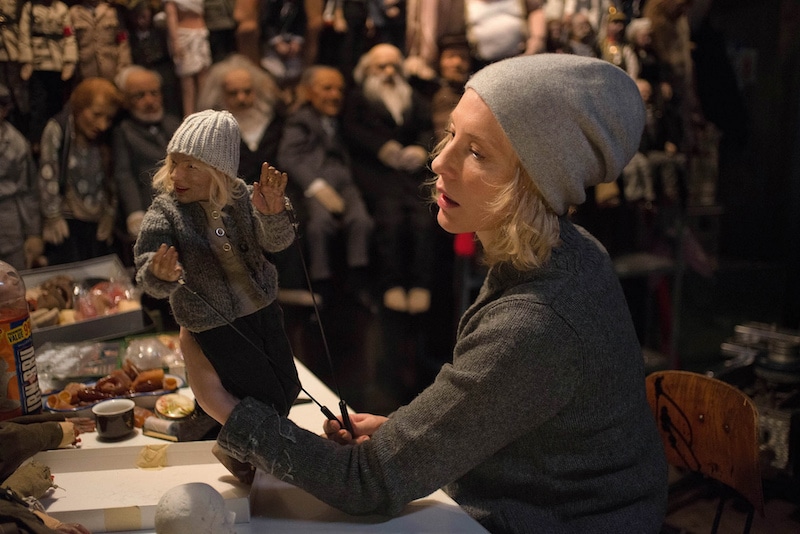
Shall we take a moment to sing the praises of Cate Blanchett? The chameleon-like actress, heiress to crown of Greatest Living Film Actress currently worn by Meryl Streep, can seemingly excel in any role from Elfen Queen (Lord of the Rings) to oppressed lesbian socialite (Carol).
Still, even the 13 separate roles in director Julian Rosefeldt’s 90-minute experimental feature Manifesto, which premiered at Sundance, must have given even her pause.
The German director is a visual artist himself and the Manifesto project first began as an installation. Indeed, you could have caught the art piece at the Park Avenue Armory Museum in New York earlier this month.
The film unfolds as a series of intertwined vignettes in which Blanchett plays separate characters whose monologues consist entirely of excerpts from 20th century art manifestos.
Though wildly different in their ideas, these public declarations share an uncompromising confidence that their dogma is the correct one – both a tribute to the artistic spirit and a lampoon of artistic pretensions.
The director plays it both ways. To varying degrees Blanchett’s characters reflect, or do not, the artists and authors of the manifestos themselves, and the contrast is often laced with humor and irony.
In one of the funniest vignettes Blanchett plays a modern-day Southern woman whose family is about to sit down for lunch at their home.
As the family gathers around and the steaming hot food is brought to the table, the post-Antebellum belle insists the family bow their heads before starting the meal. Instead of prayer, however, Blanchett’s character begins reciting a Pop Art manifesto that goes on, and on, and on.
This is a love or hate it motion picture proposition — too self-indulgent for some and wonderfully baroque for others. Art, like beauty, is in the eye of the beholder.